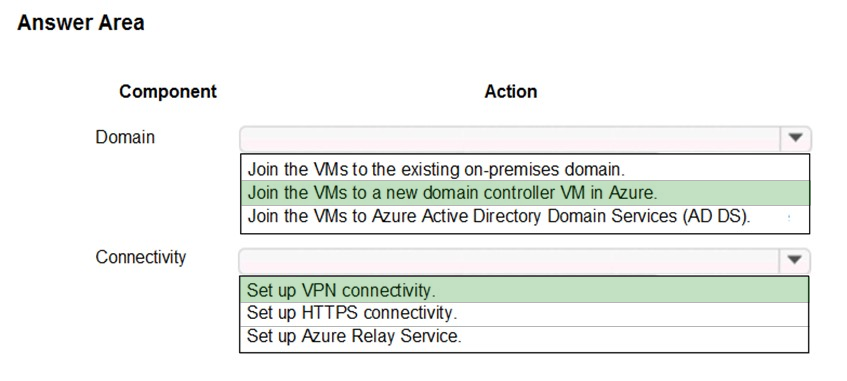

HOTSPOT -
A company runs multiple Windows virtual machines (VMs) in Azure.
The IT operations department wants to apply the same policies as they have for on-premises VMs to the VMs running in Azure, including domain administrator permissions and schema extensions.
You need to recommend a solution for the hybrid scenario that minimizes the amount of maintenance required.
What should you recommend? To answer, select the appropriate options in the answer area.
NOTE: Each correct selection is worth one point.
Hot Area:

Stevezzc
Highly Voted 4 years, 6 months agoheamgu
4 years, 3 months agojustfordevelopment
3 years, 5 months agoTripp_F
Highly Voted 4 years agoleo_az300
Most Recent 4 years agopentium75
4 years agoIndigoproftrader
4 years, 1 month agopentium75
4 years agonfett
4 years, 1 month agodemonite
4 years, 3 months agoheamgu
4 years, 3 months agoazayra
4 years, 4 months agoKrsto
4 years, 5 months agoReadyToLearn
4 years, 6 months agoKrishna23
4 years, 6 months agopentium75
4 years agoG_Z
4 years, 6 months agopentium75
4 years agoxaccan
4 years, 6 months agos1fd01
4 years, 5 months agoheamgu
4 years, 3 months ago17Master
3 years, 5 months ago17Master
3 years, 5 months ago